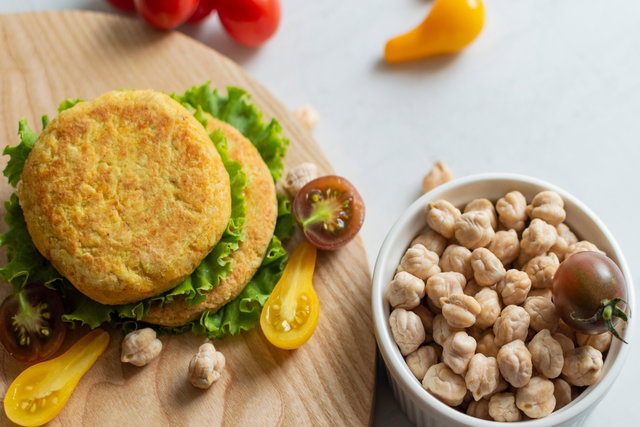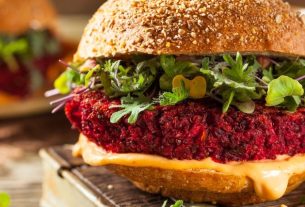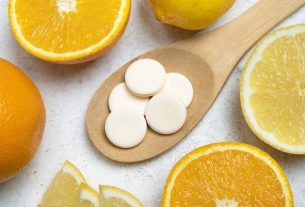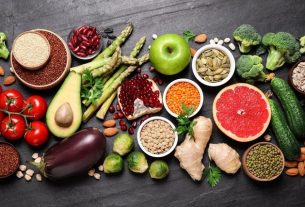Veganism is a lifestyle that aims to not collaborate with the exploitation, confinement and slaughter of animals, valuing their rights and well-being. Furthermore, veganism also aims to protect the environment and at the same time promote health, considering that regular consumption of vegetables and fruits, for example, contributes to the prevention of diseases, such as high blood pressure, cancer and obesity.
People who adhere to veganism have a strict vegetarian diet, that is, in addition to not eating meat, they do not consume eggs, milk or honey, they also do not wear clothing of animal origin, such as leather or natural hair, nor creams that contain ingredients of animal origin. or that have been tested on animals, for example.
As this is a diet that may reduce the intake of some nutrients found more easily in foods of animal origin, such as vitamin B12, vitamin D and calcium, it is important that the vegan is accompanied by a nutritionist so that a dietary plan can be created. that meets all nutritional needs. See how to avoid nutrient deficiencies on a vegetarian diet.
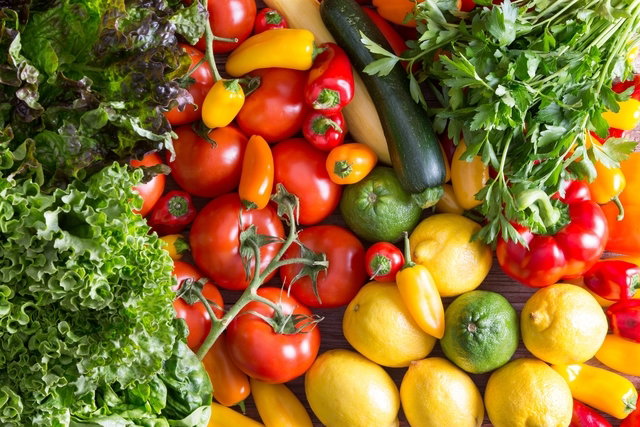
What is the difference between vegan and vegetarian
Being vegan is one of the types of vegetarianism, when a person has a lifestyle in which they do not consume any items of animal origin, be they food, clothing or cosmetic products, for example.
Being a vegetarian means that the person may or may not consume milk and dairy products or eggs in their diet, ranging from:
- Ovolactovegetariano: is a vegetarian who does not consume meat, but eats eggs, milk and dairy products. Understand better what ovolactovegetarianism is;
- Ovovegetarian: do not eat meat, milk and dairy products. They only eat eggs;
- Lactovegetariano: they do not eat meat and eggs, but they do consume milk and dairy products;
- Strict vegetarian: does not eat any food of animal origin, such as meat, eggs, milk and derivatives;
- Vegan: the same as a strict vegetarian, but also does not use any product that originates from or has been tested on animals, such as wool, leather, silk or cosmetic products.
Studies show that the vegetarian diet, as it is rich and varied in fruits, vegetables, cereals and legumes, promotes the prevention of diseases such as obesity, cancer, heart attack and atherosclerosis, when compared to non-vegetarian diets.
What to eat when vegan
The vegan diet is typically rich in legumes, vegetables, cereals and fruits, including foods such as:
- Whole grains: rice, wheat, corn, quinoa, amaranth;
- Legumes: beans, chickpeas, soybeans, peas, peanuts;
- Tubers and roots: English potatoes, baroa potatoes, sweet potatoes, cassava, yams;
- Fruits: mango, orange, lemon, avocado, banana, papaya, apple, pear;
- Vegetables: kale, tomato, chard, broccoli, chayote, spinach;
- Seeds: chia, flaxseed, sesame, pumpkin and sunflower seeds;
- Oilseeds: chestnuts, almonds, walnuts, hazelnuts;
- Soy derivatives: tofu, tempeh, soy protein, miso, seitan, tahine,;
- Others: vegetable milks, olive oil, coconut oil.
It is also possible to transform traditional recipes into vegan options, or purchase ready-made products in supermarkets or natural stores, such as soy sausages, vegetable milk, chickpea, bean or lentil burgers, for example.
It is important to remember that plant-based milks must be enriched with calcium, to ensure adequate intake of this mineral by those following a vegan diet.
Tips for those who want to be vegan
For those who eat meat and would like to be vegan, but have difficulty changing their food consumption, a tip is to gradually reduce the amount of animal protein and increase the intake of legumes, which are rich in protein, such as chickpeas, soy or bean. Find out which foods are rich in vegetable protein.
Another good option to reduce the consumption of animal protein is to adopt “Meatless Monday”, which is a global program that encourages the non-consumption of animal protein throughout the day and always takes place on Mondays.
When is it necessary to use supplementation
Supplementation in vegans should only be indicated after evaluating food consumption and a blood test, requested by the doctor or nutritionist, to confirm whether, in fact, there is a vitamin or mineral deficiency.
Although a vegan diet is normally varied and rich in fiber, vitamins C, A, E and B complex, minerals such as magnesium and vegetable proteins, it is essential to have the supervision of a nutritionist, as in this type of diet there may be a deficiency of some nutrients found in greater quantities in foods of animal origin, such as vitamin B12, vitamin D, calcium and high-quality proteins.
To maintain adequate protein consumption and avoid deficiency of this nutrient, it is important to prioritize foods such as tofu, chickpeas, beans and nuts throughout the day. To avoid calcium deficiency, you can choose foods such as plant-based milk, enriched with this mineral. Vitamin D deficiency can be avoided by consuming foods enriched with the vitamin, such as plant-based milk, or regular and balanced exposure to the sun.
To address or prevent possible nutritional deficiencies, the nutritionist may choose to recommend supplements such as flaxseed oil as a source of omega-3, vitamin B12 supplements, calcium, vegetable proteins and vitamin D.
What to avoid eating
On a vegan diet, you should avoid all foods of animal origin, such as:
- Meats in general, such as chicken, eggs, fish and seafood;
- Milk and derivativessuch as cheese, yogurt, cottage cheese and butter;
- Sausages such as sausage, sausage, ham, mortadella, turkey breast, salami;
- Fats of animal origin, like butter and lard;
- Mel and products with honey, propolis;
- Ferments with living organismssuch as fresh (baker’s) yeast;
- Jelly and products made with collagen.
Furthermore, vegans also do not tend to consume other products that have been tested on animals, such as shampoos, soaps, makeup, moisturizers, or products that use animal parts in their production, such as silk or leather clothing, for example.
Vegan diet menu
Below is an example menu of a 3-day meal for vegans:
The menu above is just a model, and it is important that the vegan diet is followed with the guidance of a nutritionist so that all nutritional needs are guaranteed, according to age, gender and health conditions.
Check out this video with our nutritionist for tips on how to choose vegan foods:
Vegan recipes
Below are some healthy vegan recipes to include in your daily life:
1. Chickpea burger
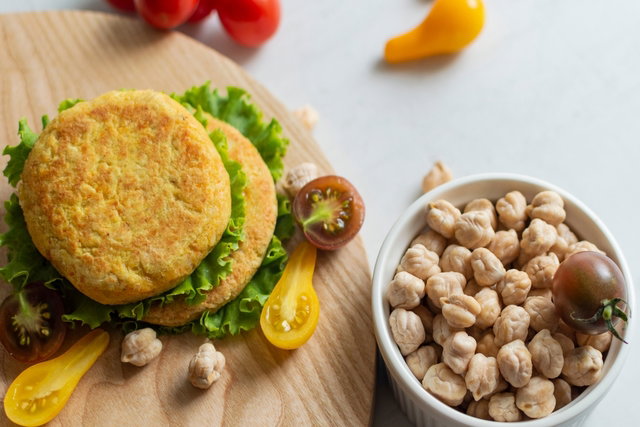
The chickpea burger is a source of vegetable protein, fiber, B vitamins and minerals such as zinc.
Ingredients:
- 300g raw chickpeas;
- 1 small chopped onion;
- 1 clove of chopped garlic;
- 1 grated carrot;
- 5 tablespoons of olive oil;
- 1 and 1/2 cups of oat bran;
- 1/2 cup of potato starch or sweet cassava starch;
- 1 teaspoon of salt;
- 1 tablespoon of chopped fresh parsley;
- Black pepper to taste.
Preparation mode:
Leave the chickpeas to soak for 12 hours. Drain and cook in a pressure cooker for 15 minutes after coming to pressure. Drain the grain and, after it has cooled, blend it in a blender and set aside. Saute the onion and garlic in a frying pan with 2 tablespoons of olive oil. Place this stew with salt, pepper and parsley in a processor or blender and blend until creamy. T
transfer the chickpeas and the stir-fried mixture to a bowl and add the carrot. Mix well and gradually add the oats and cassava flour until the burger becomes moldable. Shape the burgers into equal sizes. In a frying pan, heat ½ tablespoon of olive oil and place the burgers on the grill. Let it brown and turn over. Add olive oil as needed. Serve with bread, lettuce and tomato and other vegetables to taste.
2. Vegan almond cheese
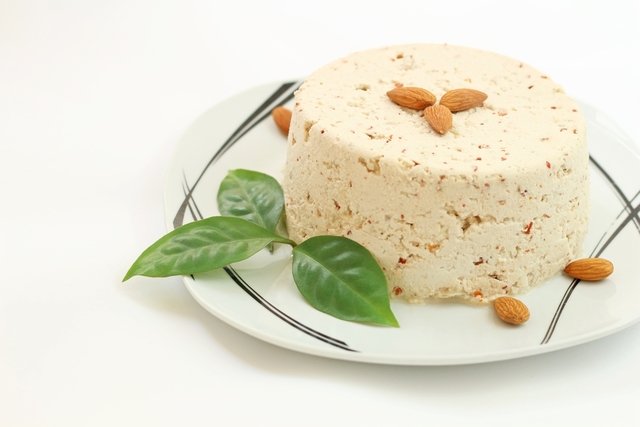
Almonds are rich in magnesium, zinc, potassium, and have a low glycemic index, which helps control blood sugar levels.
Ingredients:
- 1 cup of almonds;
- 1/2 squeezed lemon;
- 1 teaspoon of agar-agar (available in health food stores);
- ½ cabbage of salt;
- 1 pinch of turmeric (optional);
- 2 cups of filtered water.
Preparation mode:
Soak the almonds for 8 hours. Drain the water. Blend the almonds with the water in a blender. Strain the mixture through a fine cloth and reserve the almond residue for another recipe. Transfer the almond milk to a pan. Add the rest of the ingredients and cook over medium heat, stirring with a spoon, for 4 to 5 minutes to activate the agar-agar. Place the mixture in a glass container and wait for it to cool and harden. Refrigerate and consume within 7 days.
3. Vegan brigadeiro
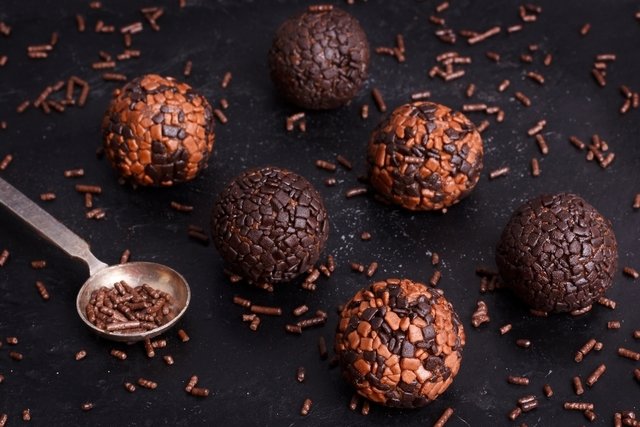
Vegan brigadeiro is rich in fiber and antioxidants, but it contains sugar and, therefore, consumption of this sweet should be moderate.
Ingredients:
- 1 cup of demerara sugar;
- 1/2 cup of boiling water;
- 3/4 cup of oat flour;
- 2 tablespoons of cocoa powder.
Preparation mode:
Carefully beat the sugar with the boiling water in a blender for about 3 minutes, and then add the oat flour, beating for another 2 minutes until you obtain a smooth cream, with the consistency of condensed milk. Then, add the cocoa powder and mix with the cream over low heat, until it boils and no longer sticks to the pan. Wait for it to cool and then serve.
4. Vegan corn cake
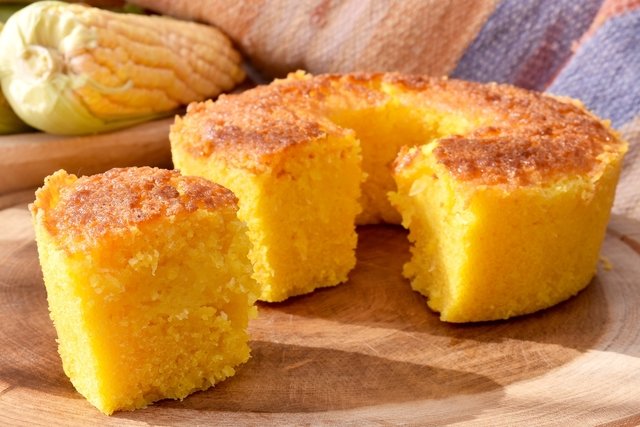
This cake is a source of protein and fiber, as well as being quick and easy to make. However, like any food with added sugar, it should be consumed in moderation.
Ingredients:
- 2 cups of green corn tea (can be canned corn);
- 2 cups of corn flour and couscous flakes;
- 1 cup of wheat flour;
- 1/2 cup of brown sugar;
- 400 ml of coconut milk;
- 1/2 cup of grated coconut tea;
- 1/2 cup coconut oil or olive oil;
- 1 teaspoon of salt;
- 2 tablespoons of chemical baking powder.
Preparation mode:
Add coconut oil or olive oil, sugar and coconut milk to the blender and blend. Add, little by little, the wheat flour, corn flour and salt. Turn off the blender and stir with a spoon, if necessary. Reserve this dough and beat the corn separately, but don’t beat it too much, as there will be little pieces in the cake.
Add the beaten corn with the dough that was separated, with a spoon and add the yeast. Place the dough in a baking dish greased with oil and wheat flour. Bake in the oven at 180° C for 45 minutes and for another 10 minutes at 200° C to brown. Wait for it to cool, remove from the pan and serve.

Sign up for our newsletter and stay up to date with exclusive news
that can transform your routine!
Warning: Undefined array key "title" in /home/storelat/public_html/wp-content/plugins/link-whisper-premium/templates/frontend/related-posts.php on line 12
Warning: Undefined array key "title_tag" in /home/storelat/public_html/wp-content/plugins/link-whisper-premium/templates/frontend/related-posts.php on line 13

